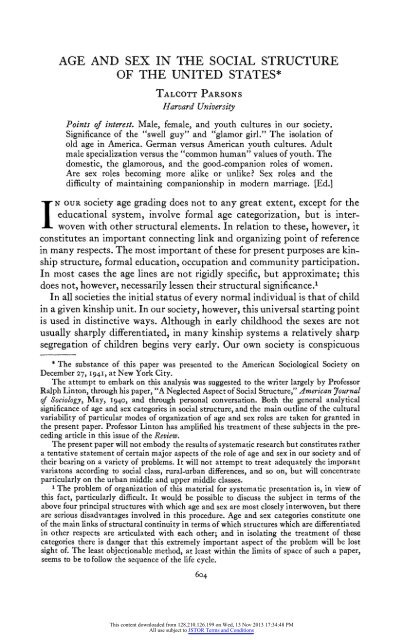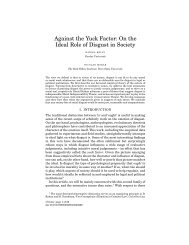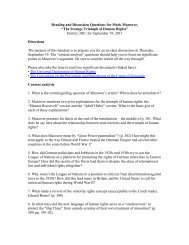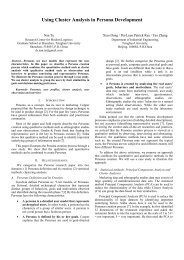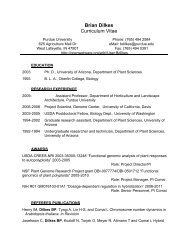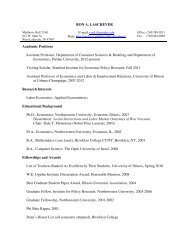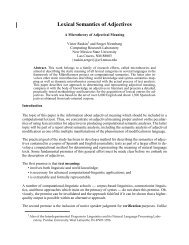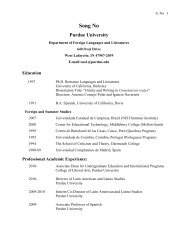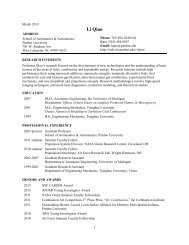Parsons 1942 - Career Account Web Pages
Parsons 1942 - Career Account Web Pages
Parsons 1942 - Career Account Web Pages
You also want an ePaper? Increase the reach of your titles
YUMPU automatically turns print PDFs into web optimized ePapers that Google loves.
J<br />
AGE AND SEX IN THE SOCIAL STRUCTURE<br />
OF THE UNITED STATES*<br />
TALCOTT PARSONS<br />
Harvard University<br />
Points of interest. Male, female, and youth cultures in our society.<br />
Significance of the "swell guy" and "glamor girl." The isolation of<br />
old age in America. German versus American youth cultures. Adult<br />
male specialization versus the "common human" values of youth. The<br />
domestic, the glamorous, and the good-companion roles of women.<br />
Are sex roles becoming more alike or unlike? Sex roles and the<br />
difficulty of maintaining companionship in modern marriage. [Ed.]<br />
N OUR society age grading does not to any great extent, except for the<br />
educational system, involve formal age categorization, but is interwoven<br />
with other structural elements. In relation to these, however, it<br />
constitutes an important connecting link and organizing point of reference<br />
in many respects. The most important of these for present purposes are kinship<br />
structure, formal education, occupation and community participation.<br />
In most cases the age lines are not rigidly specific, but approximate; this<br />
does not, however, necessarily lessen their structural significance.'<br />
In all societies the initial status of every normal individual is that of child<br />
in a given kinship unit. In our society, however, this universal starting point<br />
is used in distinctive ways. Although in early childhood the sexes are not<br />
usually sharply differentiated, in many kinship systems a relatively sharp<br />
segregation of children begins very early. Our own society is conspicuous<br />
* The substance of this paper was presented to the American Sociological Society on<br />
December 27, I94I, at New York City.<br />
The attempt to embark on this analysis was suggested to the writer largely by Professor<br />
Ralph Linton, through his paper, "A Neglected Aspect of Social Structure," American journal<br />
of Sociology, May, I940, and through personal conversation. Both the general analytical<br />
significance of age and sex categories in social structure, and the main outline of the cultural<br />
variability of particular modes of organization of age and sex roles are taken for granted in<br />
the present paper. Professor Linton has amplified his treatment of these subjects in the preceding<br />
article in this issue of the Review.<br />
The present paper will not embody the results of systematic research but constitutes rather<br />
a tentative statement of certain major aspects of the role of age and sex in our society and of<br />
their bearing on a variety of problems. It will not attempt to treat adequately the imporant<br />
variatons according to social class, rural-urban differences, and so on, but will concentrate<br />
particularly on the urban middle and upper middle classes.<br />
1 The problem of organization of this material for systematic presentation is, in view of<br />
this fact, particularly difficult. It would be possible to discuss the subject in terms of the<br />
above four principal structures with which age and sex are most closely interwoven, but there<br />
are serious disadvantages involved in this procedure. Age and sex categories constitute one<br />
of the main links of structural continuity in terms of which structures which are differentiated<br />
in other respects are articulated with each other; and in isolating the treatment of these<br />
categories there is danger that this extremely important aspect of the problem will be lost<br />
sight of. The least objectionable method, at least within the limits of space of such a paper,<br />
seems to be to follow the sequence of the life cycle.<br />
604<br />
This content downloaded from 128.210.126.199 on Wed, 13 Nov 2013 17:34:48 PM<br />
All use subject to JSTOR Terms and Conditions


